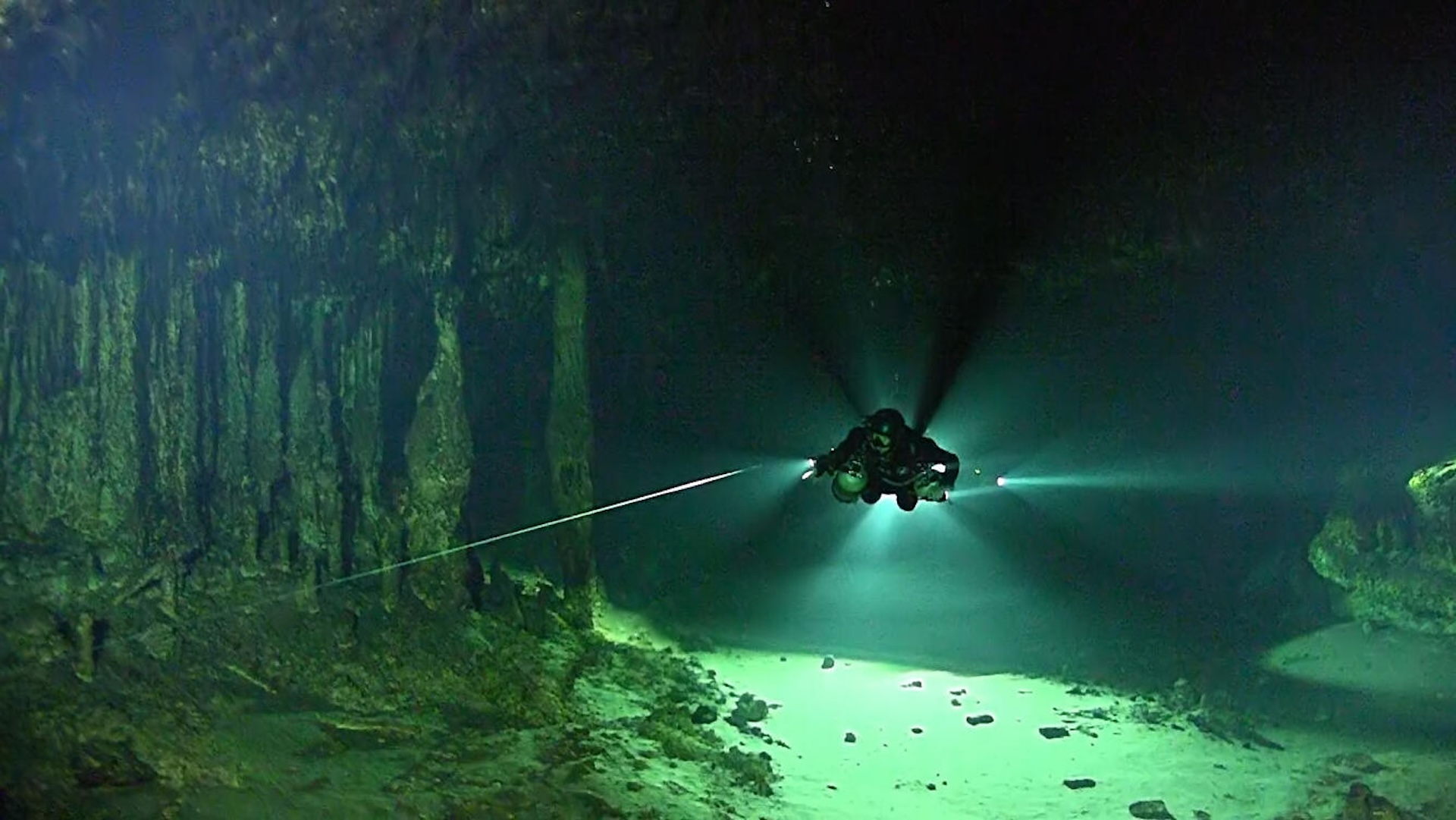Sistema Ox Bel Ha: A vast hidden system that's the longest underwater cave in the world
This incredible submerged cave network is the longest of its kind in the world and plays a vital role in the region.

Name: Sistema Ox Bel Ha
Location: Quintana Roo, Yucatán Peninsula, Mexico
Coordinates: 20.18507611995248, -87.49650948586978
Why it's incredible: This massive submerged cave system is among the longest in the world and holds a number of spectacular features and remains.
Sistema Ox Bel Ha, meaning "three paths of water" in the local Mayan language, is a gigantic submerged labyrinth that runs for at least 326 miles (524 kilometers) underground, according to the Investigation Center of the Aquifer System of Quintana Roo (CINDAQ). This makes it the longest submerged system and the second-longest cave system in the world, after the 426-mile-long (686 km) Mammoth Caves in Kentucky.
The Yucatán Peninsula is home to several massive cave systems because it has a thin layer of top soil covering limestone, which is soluble, enabling rain water to quickly pass through into caverns below the surface, according to a 2020 study. This is also the reason why the region has few rivers or streams.
The caverns form through a process called karstification, in which rain water dissolves calcium carbonate from the limestone. In the case of Ox Bel Ha, this process is supercharged as the fresh water meets salt water that's entered the system from the ocean.
The fresh and salt water form distinct layers and meet at a point in the cave water called the halocline. This line varies in Ox Bel Ha, varying from 33 feet (10 meters) near the coast, where there is more salt water, to 66 feet (20 m) deep further inland. CINDAQ estimated that 27% of the system is salt water and 73% fresh water. This fresh water feeds the vast Maya aquifer, which is the only source of drinking water in the region.
The karstification process can cause cavern roofs to collapse, creating an exposed pool or sinkhole, known as a cenote. Ox Bel Ha has at least 160 cenotes, and they are important water sources for animals and ecosystems, according to CINDAQ. The organization has recently recorded a number of species around the cenotes, such as cougars (Puma concolor), jaguars (Panthera onca) and various deer and other animals.
The system also supports a range of creatures below the surface. In 2018, scientists discovered that the subterranean system supports its ecosystem with methane. Methane forms below the jungle floor and then migrates down into the caves, where microbes and bacteria consume it. These in turn become food for cave-dwelling crustaceans as well as several species of fish, including an eyeless albino cave fish.
Ox Bel Ha runs near the historical Maya town of Tulum. The ancient Maya believed that cenotes were gateways to Xibalba, the Maya underworld, and these pools, along with those of the nearby Sistema Sac Actun, have yielded a number of important archaeological finds.
Get the world’s most fascinating discoveries delivered straight to your inbox.
Most notably, researchers found the remains of a 25- to 30-year-old woman, named Eve of Naharon, whose remains may date to 13,700 years ago — potentially making these the oldest human remains found in the Americas. However, a 2021 review noted that this date has not been replicated or verified. Evidence suggests the woman was deliberately placed on the cave floor, which wasn't flooded at that point, although this also isn't clear, a 2020 study noted.
Ox Bel Ha's system is under threat from construction and developments, including the Maya Train and Tulum International Airport, and it already runs under a number of urban areas, CINDAQ said. This makes studying and mapping the vast underwater system critically important, CINDAQ added.
Discover more incredible places, where we highlight the fantastic history and science behind some of the most dramatic landscapes on Earth

James is Live Science’s production editor and is based near London in the U.K. Before joining Live Science, he worked on a number of magazines, including How It Works, History of War and Digital Photographer. He also previously worked in Madrid, Spain, helping to create history and science textbooks and learning resources for schools. He has a bachelor’s degree in English and History from Coventry University.
You must confirm your public display name before commenting
Please logout and then login again, you will then be prompted to enter your display name.

